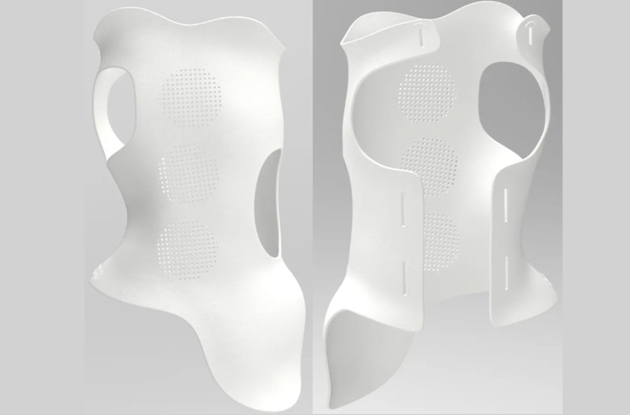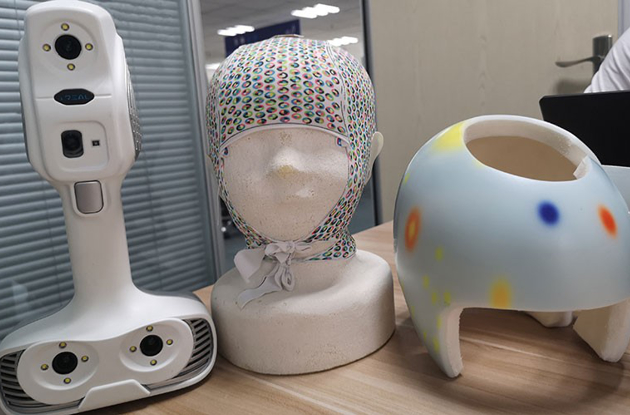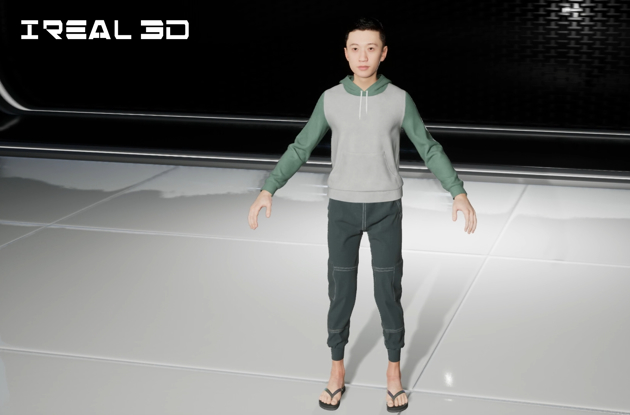3D Scanning Applications in Non-industrial Areas
3D scanning is not all about industrial applications, some non-industrial activities also require the engagement of 3D scanning technology. However, there are differences between the two: the former often has strict requirements for data accuracy and precision, while the latter tends to lean more on its other properties like the ease of use, color scanning ability, and adaptability to scan human bodies.
Scantech’s professional 3D scanning equipment supports both. You can find the presence of our products in non-industrial fields, such as medical rehabilitation, virtual reality, art and design, scientific research and education, and so on. Among all our products, the iReal M3 3D color scanner is the most applicable one for non-industrial activities.
Scantech’s non-industrial applications can be divided into two parts: iReal 2E 3D scanning and 3D laser scanning. iReal 2E supports color scanning, human body scanning, and light-free scanning and it is very easy to use even for beginners. 3D laser scanning can work with iReal 3D Mapping Software to achieve high-precision, true-color 3D modeling solutions for cultural heritage, 3D digital collections, etc.
We cater to a variety of needs in non-industrial applications, specifically:
Explore More Possibilities by 3D Digitizing Everything

Sculptures

Figurines

Precision Medicine

Digital Humans

Education

Online Exhibitions

Virtual Reality

Metaverse
High-precision and Color 3D Scanning for Non-industrial Areas
At Scantech, the 3D digitization solutions we provide for customers in non-industrial areas fall into two categories: high-precision and true-color 3D digitization. In terms of high precision, the accuracy of our 3D laser scanners can reach up to 0.020 mm, which can help capture every detail of the scanned object. And our true-color 3D solution includes 3D scanning + iReal 3D mapping, truly realizing highly accurate details and high-definition textures at the same time.

Customized Spinal Orthosis
Compared with traditional plaster treatment, 3D scanning and 3D printing for custom-made spinal orthosis is a much more patient-friendly and effective way to treat spine deformity. By 3D scanning the patient's deformed spine, doctors and technicians will conduct analytic planning based on medical images and 3D scan data, and then start designing the most suitable 3D model. Unlike traditional plasters, these customized spinal orthoses are 100% fit for each patient, and they are lightweight, well-ventilated and normally have better treatment results.

Baby's Plagiocephaly Helmet
Some babies were born with flat head syndrome, which is quite bothering if their parents want a complete correction. The traditional correction helmets are often mass-produced and are not comfortable to wear. Thanks to the help of 3D scanning, we get to find an effective way to improve it. Using a 3D scanner with infrared structured light, such as iReal 2E 3D scanner, the 3D data of the baby's head can be captured completely. The 3D scanned data can be used for designing correction helmets, which can be 3D printed later.

3D Printing Figurines
There are often memorable moments we would like to keep forever. Besides taking pictures, have you ever tried 3D printing those loving moments into vivid figurines? This is where Scantech can help. With our 3D body scanner, you can get the 3D scanned data of your full body or specific body part, which can be used for 3D printing into figurines. With those vivid figurines of yourself or your loved ones, you can make those memories alive whenever you look at them.

Digital Humans for Metaverse
The concept of "Metaverse" has become a huge hit in recent years. It represents the beginning of a brand-new era of 3D technology. What role does 3D scanning play in building the “Metaverse”? For those e-commerce enterprises and technology enterprises, with 3D scanned data of real-life humans and objects, they can build a 3D virtual system with highly alike details. Nowadays, more and more industries are using 3D scanning technology to build their own “Metaverse” and boost their businesses, such as media and entertainment, manufacturing, healthcare, etc.

3D Digital Database Construction
This type of application is mainly seen in universities, educational institutions and cultural heritage protection. For instance, with high-precision 3D scanning, we can make the restoration of a thousand-year-old bronze tree possible. Take the education industry as another example, a 3D scanner can be a tool to help students have a more thorough understanding of the projects they are studying: a 3D database of traditional medicine for medical students, different 3D cultural collections for art students and so on.
Learn more >Industrial Applications VS Non-industrial Applications
Industrial Applications
● Higher requirements for accuracy and precision
● The 3D scanning operator needs to be very experienced
Non-industrial Applications
● Relatively low requirements for accuracy and precision
● Easily to get started with the 3D scanner
● Color scanning ability is a bonus





